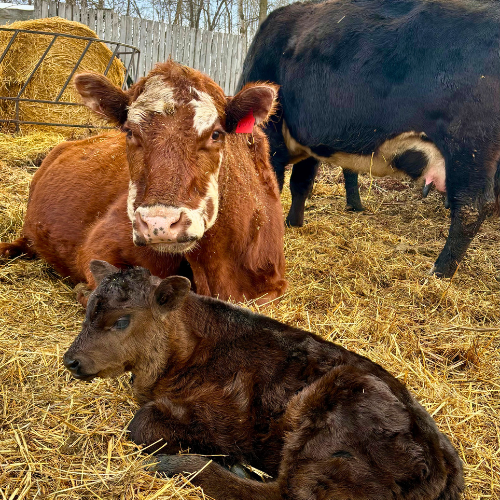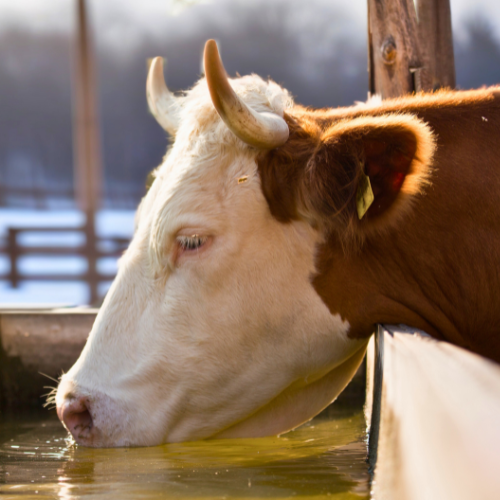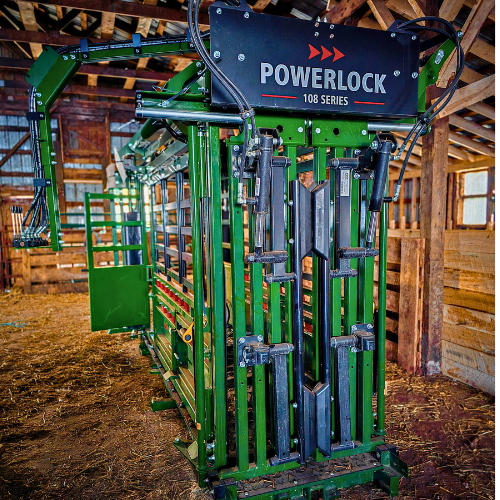Top Winter Cattle Handling Tips for Cold-Weather Safety
How to Prepare Your Herd and Cattle Equipment for Winter
Go Back to All BlogsPosted on: November 18, 2025
Updated on: November 18, 2025
Author: Janelle Hulme
SHARE:
Winter is one of the toughest seasons for ranchers. Working in the winter brings challenging weather conditions, including snow, ice, cold, or too much rain. Sometimes it is hard to stay motivated, but as every rancher knows, cattle need to be fed, and the work has to be done.
Keeping cattle and handlers safe during the winter months is extremely important. It’s the time of year when handling cattle takes more care and more caution. Using good cattle handling principles is always important. In the winter, it becomes essential to save time and decrease agitation and the chance of injuries when factoring in less-than-desirable weather conditions.
Whether you’re processing, sorting, treating, or moving cattle through your handling system, these winter handling tips can help keep your cattle calm, stock people safe, and your operation moving through the coldest months of the year.

1) Keep cattle dry and out of the wind.
With the extreme weather conditions that cattle producers around North America face, it is important to prevent cattle from becoming sick or injured. Windchill is the biggest factor in winter cattle stress. Even well-conditioned cattle can experience hypothermia, which can cause death in cattle.
Keep cattle out of the wind and in a dry, warm spot to prevent hypothermia. Cattle should be moved inside if possible when temperatures fall below -40 degrees Fahrenheit.

2) Make hydration a priority.
Adequate hydration is essential to animal health in any season. Colder temperatures often cause decreased water consumption in livestock, which can be helped by providing access to salt. Ensuring cattle have fresh, clean drinking water is also more challenging in freezing temperatures.
Some cows adapt by eating the snow, but this is not an effective hydration strategy. Cattle must have a fresh water supply every day to prevent dehydration. Cattle that are dehydrated can have behavioral issues that increase the risk of injury to handlers and other cattle. Keep troughs from freezing with floating or sinking stock tank de-icers, and be sure to check heating elements in automatic watering systems daily.

3) Maintain cattle handling equipment.
Proper maintenance of cattle handling equipment is important in the winter months. Seasonal maintenance is recommended on all equipment, however proactive winter maintenance decreases the risk of equipment malfunctions that lead to injury. Starting with the right equipment is the first step. Cattle handling equipment should be manufactured with the latest animal science research and the ability to withstand weather and cattle working conditions.
Chutes, alleys, and loading chutes can become slippery in winter weather. Apply sand or salt and remove ice prior to using a handling system. Covering or moving a cattle handling system indoors can prevent snow and ice buildup and increase safety. Check all gates, latches, and chute mechanisms regularly and apply grease or perform maintenance as needed.
The safety of cattle and handlers, and profitability of ranches is a priority for us. Through research and development, we have designed and manufactured our cattle handling equipment to be able to take on any weather conditions including harsh Canadian and northern American winters, and the hot sun of the Australian outback.
Arrowquip is the only cattle equipment manufacturer that has a team of engineers dedicated to the cattle handling process and the animal science behind it. The equipment that we design and build is created for the North American rancher and can withstand any condition the environment throws at it. Ranching in the winter is challenging. Your cattle handling equipment should make it easier.
The joys and discomforts of agricultural life are present in all facets of the industry. The discomforts can be minimized during the winter months by keeping cattle dry and out of the wind, keeping cattle hydrated, and maintaining your cattle handling equipment. These practices will improve herd health, reduce safety risks, and increase the economic viability of your cattle operation.